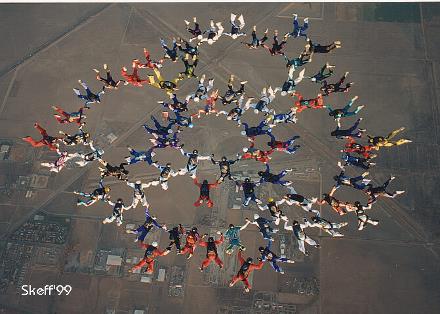


|
Disorder on an intermediate ranged length scale, as in the case of a network glass, is illustrated by a formation of skydivers. Each diver has a simple set of rules for bonding to the next but there is sufficient flexibility for different patterns of ordering to be created on the scale of a few body lengths. For more information see Salmon P S 2002 Nature Materials 1 87-88. |

|
Neutron and x-ray scattering techniques are at the forefront of the methods used to understand the microscopic structure and dynamics of a plethora of liquids and glasses which are of fundamental scientific interest and of importance in applications ranging from materials science to chemistry and biology. Significant progress in the field has been made possible only through a close collaboration between theoreticians (especially computer simulators) and experimentalists working at the central facilities that are a prerequisite for producing the intense neutron and x-ray beams required to meet outstanding scientific and technological challenges. Our research philosophy is to embrace this symbiotic relationship in order to develop realistic models for the systems under investigation and thereby take best advantage of state-of-the-art instrumentation and computational methods.
The publications of the group can be found on the following pages.
|